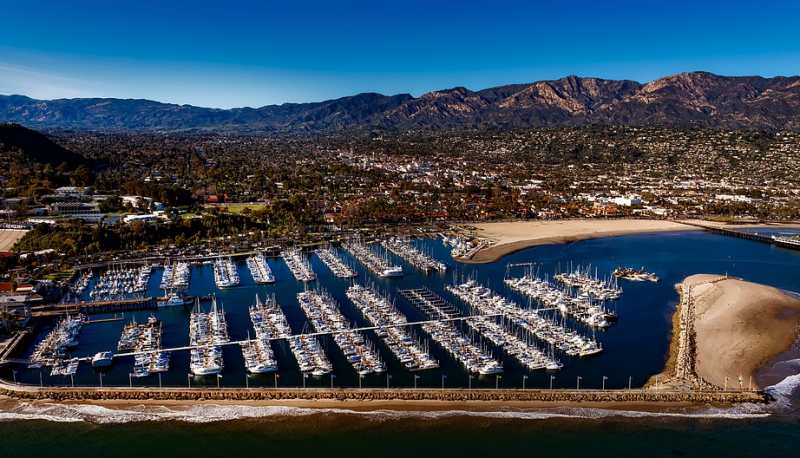Solar to the People – Helping you get the best price on solar
Switching to Solar Panels in Santa Barbara
Discover how much you can save today with our solar calculator
What Are the Advantages of Switching to Solar in Santa Barbara?
No matter where you live in the United States, there’s never been a better time to go solar. The falling cost of solar panels has made solar panel installation more affordable and more advantageous across the nation, but California is undoubtedly leading the revolution. A lower solar installation cost means that a switch to solar is an even smarter investment for Santa Barbara homeowners. Considering the abundance of sunshine, costly electricity rates and the low average residential solar panel cost in Santa Barbara, it’s no wonder so many residents are making the leap.
The price of solar detailed below is well worth the utility savings, energy independence and other advantages of switching to solar in Santa Barbara.

How Much Do Solar Panels Cost in Santa Barbara?
The California solar marketplace is very large and diverse, which means the cost of solar panels in California varies considerably from area to area. So, how much do solar panels cost in Santa Barbara? To find out, let’s look at the details using the average system size for residential solar installation. According to data from 2017, this is how the average Santa Barbara solar panel system breaks down after including typical rebates and incentives;
The average price per watt for an installed solar panel system is just over $3.60 and, the average size of a solar power system in Santa Barbara is 4.6 kilowatts. The average cost of a solar panel system in Santa Barbara is $16,575 in total.
Santa Barbara solar panel system breaks down after including typical rebates and incentives:
- The average price per watt for an installed solar panel system is $3.60.
- The average size of a solar power system is 4.6 kilowatts.
- The average cost of a solar panel system is $16,575 in total.
What Is the Price of Electricity in Santa Barbara?
In order to get a true picture of the costs and benefits of installing solar power, it’s also important to understand your electricity rates and how they stack up against what others pay. After all, the amount you can expect to save is directly dependent upon your average electricity cost through your utility provider.
With that in mind, the average price of electricity in Santa Barbara is 15.98 cents per kilowatt-hour. This is about 1.6 percent higher than the average price of electricity in California. It’s also a staggering 21.6 percent higher than the national average of 12.87.
Southern California Edison (SCE)
This picture becomes more complicated if you’re serviced by Southern California Edison (SCE). Customers who are on SCE’s Standard Residential Rate Plan are subject to a four-tiered rate system based on their electricity consumption.
Households that consume relatively little electricity fall into Tier 1 and pay a baseline rate of 16 cents per kilowatt-hour.
You can expect to pay 23 cents per kilowatt-hour if you draw enough power to cross the threshold into Tier 2. This system progresses all the way up to a rate of 30 cents per kilowatt-hour at Tier 4.
What Solar Incentives and Rebates Are Available in Santa Barbara?
One of the reasons solar energy is such an attractive investment is the fact that there are a variety of ways to reduce your costs. As with the rest of California, there are several available incentives and rebates in Santa Barbara to help homeowners who are ready to bring solar energy into their homes.
Here are the incentives and cost-saving opportunities you should know to help maximize your solar savings in Santa Barbara.
The Federal Renewable Investment Tax Credit:
The most important tool for saving money on solar panels is undoubtedly the Investment Tax Credit (ITC). Also known as the federal solar tax credit, the ITC is a federal tax credit that’s made available to all homeowners who install solar energy systems. This incentive is currently scheduled to run through the end of 2021, but you’ll have to act soon to enjoy the maximum savings. Homeowners who apply between now and 2020 will receive a credit equaling 30 percent of the cost of the system. This decreases to 26 percent in 2020, however, and further drops to 22 percent in 2021.
State Rebates and Incentives:
At the state level, the biggest solar energy incentive can be found in the California tax code. Installing a solar panel system on your home results in a considerable boost to the value of your property. Under normal circumstances, you’d have to pay increased property taxes to account for this added value. However, the tax code in California provides an exemption for the full price of any system installed before December 31, 2024. That means you can install a new system without worrying about paying any increase in taxes. Additionally, the California Solar Initiative provides cash rebates to help low-income customers of Pacific Gas and Electric (PG&E), Southern California Edison (SCE) or San Diego Gas and Electric (SDG&E) afford solar power.
Local Incentives:
Depending on where you live, there may be other incentives available beyond those offered by the federal and state governments. These are typically offered by either local governments or utility providers. For instance, Silicon Valley Power and Los Angeles Department of Water and Power both offer rebates for each watt of solar power you install. Another great way to save is net metering.
Net Metering in California
Despite facing political challenges, net metering in California is one of the most robust programs in the nation. Offered through each of the state’s utility providers, net metering allows you to send any surplus energy generated by your system back to the power grid. In return, you receive account credits to help offset your costs when you need to draw power from the grid.
Does Solar Power in Santa Barbara Make Sense?
There’s a lot to consider before you make the decision to invest in solar power. It’s important to weigh the costs of solar panel installation against the solar savings you can expect. It’s also essential to keep in mind the amount of solar energy available in your area. Fortunately, Santa Barbara is a winner in this regard. According to data from the Photovoltaic Solar Resource of the United States, Santa Barbara homeowners can expect an average of 6.0 to 6.5 kilowatt-hours per square meter each day. Of course, your exact generation potential will vary depending on the size and positioning of your roof, how much shade is nearby and other factors unique to your home.
Putting it all together, it’s easy to see why solar power in Santa Barbara is a great option for so many residents. With electricity rates that are much higher than the national average, Santa Barbara homeowners face significant energy costs. There are a variety of rebates and incentives to help make solar panel installation more affordable. The Santa Barbara area is among the best in the country in terms of solar energy generation. Considering all of these factors, the average solar savings for a 6.0-kilowatt system over 20 years would be around $66,000. That’s a pretty good reason to join the solar revolution!

